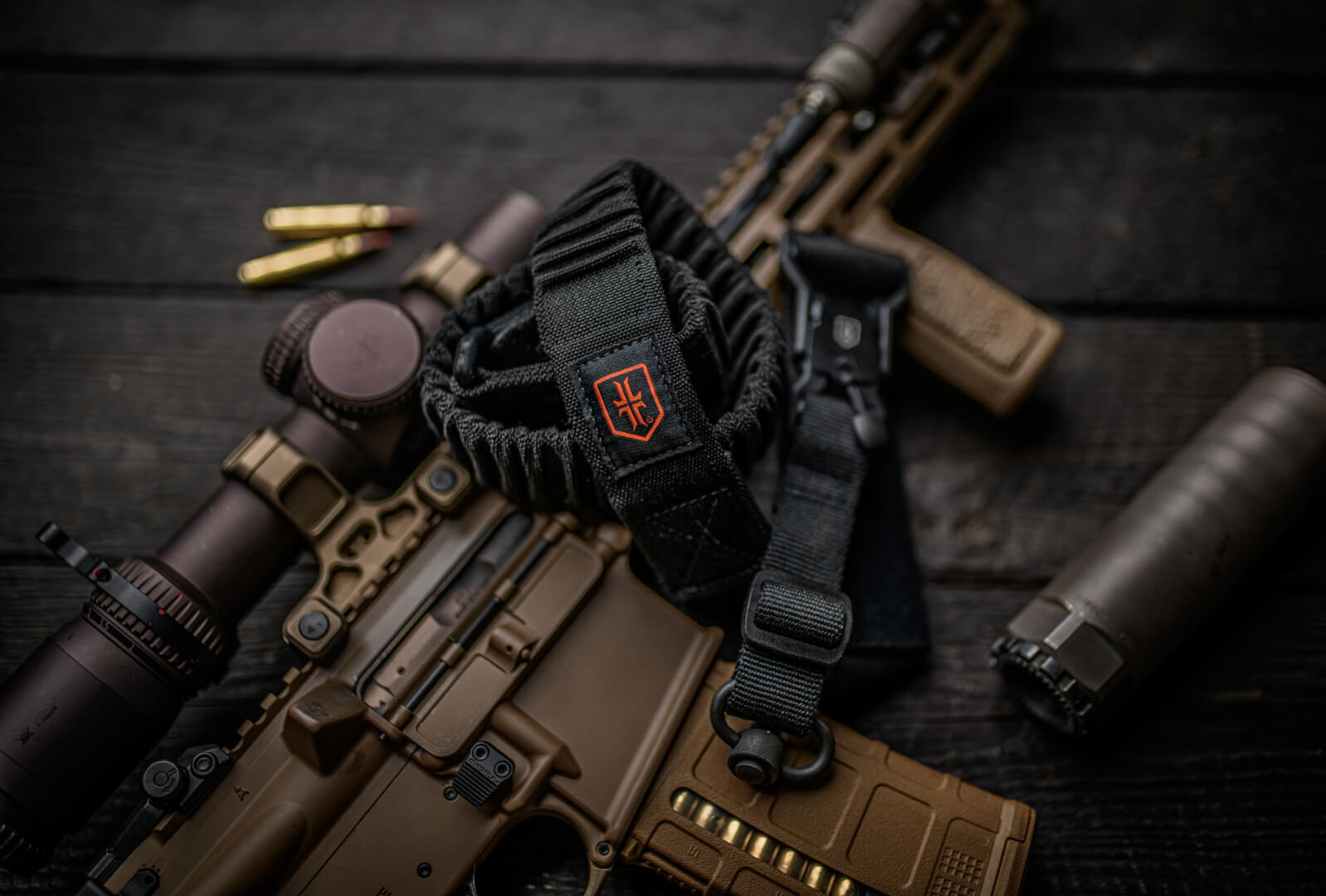How to Properly Set Up Your Rifle Sling
Posted by Warrior Poet Society on Feb 6th 2025
Alright folks, let's talk about how to set up your sling properly. We’ll talk about the correct options that I (John Lovell) go with, and some wrong things that Paul goes with (Paul would say that I’m wrong because that’s “always the way it is,” but we’ll agree to disagree).
With almost everything, whatever you get, you give up something else, so there is no real perfect way to set up the sling. You have to weigh your preferences against the expense of things that may not be ideal. The first thing I would say about a proper sling setup is that your sling is meant to hold your rifle so that you don’t have to.
This means that in any environment where I need to work with my hands: opening doors, taking casualties, treating medical, or just doing general administrative tasks, I don’t have to have my hands on the rifle. But if my sling is too long, and I’m working, and it's hitting me in the knees then I would suck at setting up slings.
But don’t worry. I don’t suck at setting up slings, and I’m going to make sure you don’t either.
A slung rifle is not a flowing dress. Your rifle should sit high on your chest, and ideally, the buttock should rest naturally up close to the pocket of the shoulder. So, if you go from a position of non-readiness to a posture of immediate readiness to put quick rounds on target, it's smooth, it's fast, and it's efficient.
Sling Retention
Let’s talk about sling tension. Your sling should be tight enough to your body so that your rifle stays close and away from your legs in the event you really need to leg it somewhere fast, but it should also have just enough give to allow you to extend into a full presentation and permit efficient weapon manipulations like reloads and clearing malfunctions.
In short, if you’re going to be rucking or climbing or doing anything that requires your rifle to be cinched tight to your body, you need it to be, but once you need to fight, you need that sling to have either enough give through a bungee system (like our WPS Rifle Sling) or an adjustable slide that creates slack in the sling (like our WPS Adjustable Rifle Sling).
Now if you think you’re about to encounter some type of resistance or violent action, you can preemptively slacken your sling to give you the needed room and flexibility to fully fight with your rifle. Sling tension is kind of a double-edged sword, if you’re not careful it can help you one minute and hurt you the next. So, be mindful.
Another solution is a quick and easy option in the event you are surprised by violent action or simply prefer this, you can “swim out of your sling.” This is accomplished by dropping your support hand and dipping your elbow through the loop before replacing your support hand back on the handguard or rail, leaving the sling just lightly hanging around your neck. This option is ideal for operating in compressed environments: around cars, with teammates, close-quarters battle, etc.

Sling Attachment Points
Now, let’s talk sling attachment points. You should be using a two-point sling for your rifle. A two-point sling is a sling that attaches to your rifle at two points or places. Ideally, one end of the sling would connect to the buttstock and the other to the rail or handguard — either near the muzzle or just near the upper receiver.
75% of what we’re teaching is hard, fast, and non-negotiables of gunfighting. The other 25% of the equation is an art form: simply that which you prefer. Fixing your rear sling attachment to the outside of your buttstock is part of that 75%. The sling won’t get in the way of
your shouldering or cheek weld, and the position helps keep the stock close to your shoulder pocket for quick engagement.
The 25% comes into play with the forward sling attachment. Whether you like to attach closer to the upper receiver or closer to the muzzle may depend on your body composition, kit, and overall feel. Try both to see what works best for you and produces the maximum performance out of you and your equipment.
Both ways have their pros and cons. I prefer to fix my front sling point closer to the upper receiver, while Paul (who would be wrong) prefers to fix the sling closer to the muzzle. However, I will concede that the forwardmost position does allow for that traditional rifleman’s wrap to create a more stable rifle for engaging targets at a distance.
Conclusion
Remember, at the end of the day, how you wear your sling is partly a matter of preference and maximizing your performance. There are niche instances where fixing your rear sling attachment to the lower receiver might be more beneficial, but in most use cases, we stand by what we have said here. For most gunfighters and shooters, the sling setup we teach is ideal for most situations.
Until next time. Train Hard. Train Smart. And get that sling dialed in.

